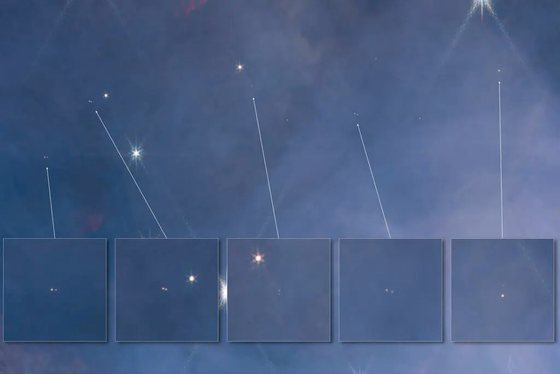They are not stars, they are not planets, and they “shouldn’t exist.” The James Webb Telescope’s new discovery goes against everything scientists have ever studied. It’s not just the size of objects near the Orion Nebula that defies the limits of physics, but also the way they move.
The European Space Agency (ESA) announced on Monday that He captured 42 objects in space, which he called JuMBOs, short for Jupiter Mass Binary Object.Which may lead to the emergence of a new class of stars.
This is because the massive objects, which must be about a million years old, are “too young to be stars,” but they also cannot be considered planets because they “do not orbit any star.” And there is another peculiarity: they move in pairs.
Although there are already theories about the formation of objects, none of them understand the reason for this form of movement. One says the massive objects were likely created in a region of the nebula, “where the density of matter was insufficient to form straight stars,” and another says they may have been born “About the stars that then expelled them into space.”
“This hypothesis is currently preferred,” said Professor Mark Macogrian from the European Space Agency. For BBC News. “Gas physics suggests that it should not be possible to create Jupiter-mass objects on their own, and we also know that individual planets can be ejected from star systems. But how do you eject pairs of these objects together?” Asked.
“It would be like throwing a cup of tea across the room and the pieces falling together.”Samuel Pearson, a scientist from the same agency, noted.

Although there are few answers, discovering such a small object in space is a big step for scientists.
We were looking for these tiny little things and we found them. “We find them as small as the mass of Jupiter, or even half the mass of Jupiter, floating freely, not attached to a star,” he said. Quoted from The Guardian. “Physics says it’s not even possible to make things that small. We wanted to see if we could break physics. And I think we did, which is good.”
The massive objects are located 1,350 light-years from Earth, separated by about 200 times the distance between Earth and the Sun, and “orbit on paths that take more than 20,000 years to complete.” The New York Times explained.

